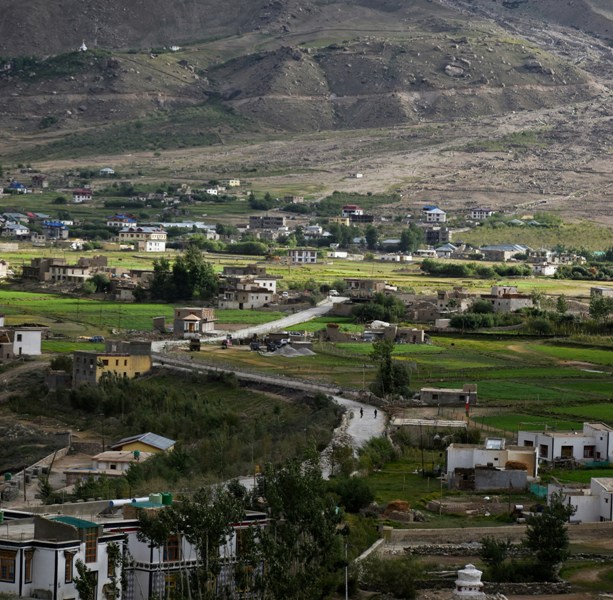
Tucked away in the remote folds of the Indian Himalayas, Zanskar Valley is a hidden paradise that few travelers get to witness—but those who do, never forget. Located in the Kargil district of Ladakh, this high-altitude desert valley offers awe-inspiring landscapes, ancient Buddhist culture, thrilling treks, and unmatched tranquility.
Zanskar is not just a destination—it’s a journey through time, silence, and extremes.
Zanskar Valley lies to the southwest of Leh and southeast of Kargil, bordered by the Great Himalayan Range to the south and the Zanskar range to the north. The valley is carved by the Zanskar River, a tributary of the Indus, and is accessible only during specific months due to its harsh terrain and heavy snowfall.
Summer (June to September): The only time when roads are open and weather is favorable for exploration. Daytime temperatures are mild, though nights remain chilly.
Winter (December to February): Ideal only for the legendary Chadar Trek, when the Zanskar River freezes and becomes a trail of ice. The valley is otherwise inaccessible by road in winter.
Route: Srinagar → Kargil → Padum (Zanskar’s capital)
Distance: Approx. 470 km from Srinagar
Road Open: June to October
Route: Manali → Darcha → Shingo La → Padum
Requires a 4×4 and permits.
The Shingo La tunnel, once completed, will drastically improve year-round connectivity.
For adventurers, trekking routes from Lamayuru, Lingshed, or Darcha offer a raw and rewarding way to enter Zanskar.
The administrative center and main town in Zanskar, Padum is the base for most travel in the region. It offers basic accommodation, monasteries, and markets, and serves as the starting point for many treks and drives.
Built into a cave on a cliffside, Phuktal (or Phugtal) Monastery is one of the most remote and dramatic gompas in the world. It’s accessible only on foot or via horseback and offers stunning views along with spiritual solitude.
The lifeline of the valley, the Zanskar River cuts through deep gorges and barren landscapes. In summer, it’s great for white-water rafting, while in winter, it transforms into the icy route for the famous Chadar Trek.
The largest monastery in Zanskar, Karsha Gompa sits on a hilltop and provides panoramic views of the valley. It’s known for its ancient murals, prayer ceremonies, and vibrant festivals.
Second only to Karsha, Stongdey Monastery is perched at 11,800 ft and offers a peaceful setting and detailed murals depicting Buddhist cosmology.
Once a royal capital, Zangla has a small palace, remote villages, and a nunnery. It’s ideal for those wanting to understand the simple yet rich lifestyle of Zanskar’s people.
Zanskar is a trekker’s dream, with some of the most remote and beautiful trails in the Indian Himalayas.
Chadar Trek (Winter): Walk on the frozen Zanskar River—a challenging but iconic expedition.
Lamayuru to Padum Trek: A high-altitude classic passing through ancient monasteries.
Phuktal Trek: Moderate trek from Raru to Phuktal, doable in 2–3 days.
Darcha to Padum via Shingo La: One of the most scenic and lesser-explored routes.
Zanskaris practice Tibetan Buddhism, and the valley is dotted with ancient monasteries, stupas, and mani walls. The harsh climate has led to a deeply communal lifestyle centered around farming, weaving, and monastic life.
Don’t miss:
Festivals like Gustor (Karsha) and Cham dances
Trying tsampa, yak butter tea, and local barley beer (chang)
Interacting with monks and villagers in homestays
Padum: Offers basic guesthouses and a few budget hotels.
Homestays: Available in villages like Zangla, Raru, and Purne.
Camping: Allowed near rivers and trek routes—ideal for nature lovers.
Acclimatization: The valley is above 11,000 ft; spend a day acclimatizing.
Connectivity: Very limited network—BSNL has some coverage in Padum.
Fuel: Fill up in Kargil; Padum has limited petrol availability.
Permits: Indian tourists don’t need permits. Foreigners may require Inner Line Permits for certain areas.
Cash: Carry enough—ATMs are unreliable and sparse.
Zanskar Valley is not for the faint-hearted—it’s remote, rugged, and often challenging. But therein lies its magic. For those willing to brave the roads and altitude, Zanskar rewards you with unmatched natural beauty, ancient spirituality, and a sense of peaceful isolation that modern life rarely allows.
It’s a place where the stars feel closer, silence speaks volumes, and mountains become mentors.
Comment (0)